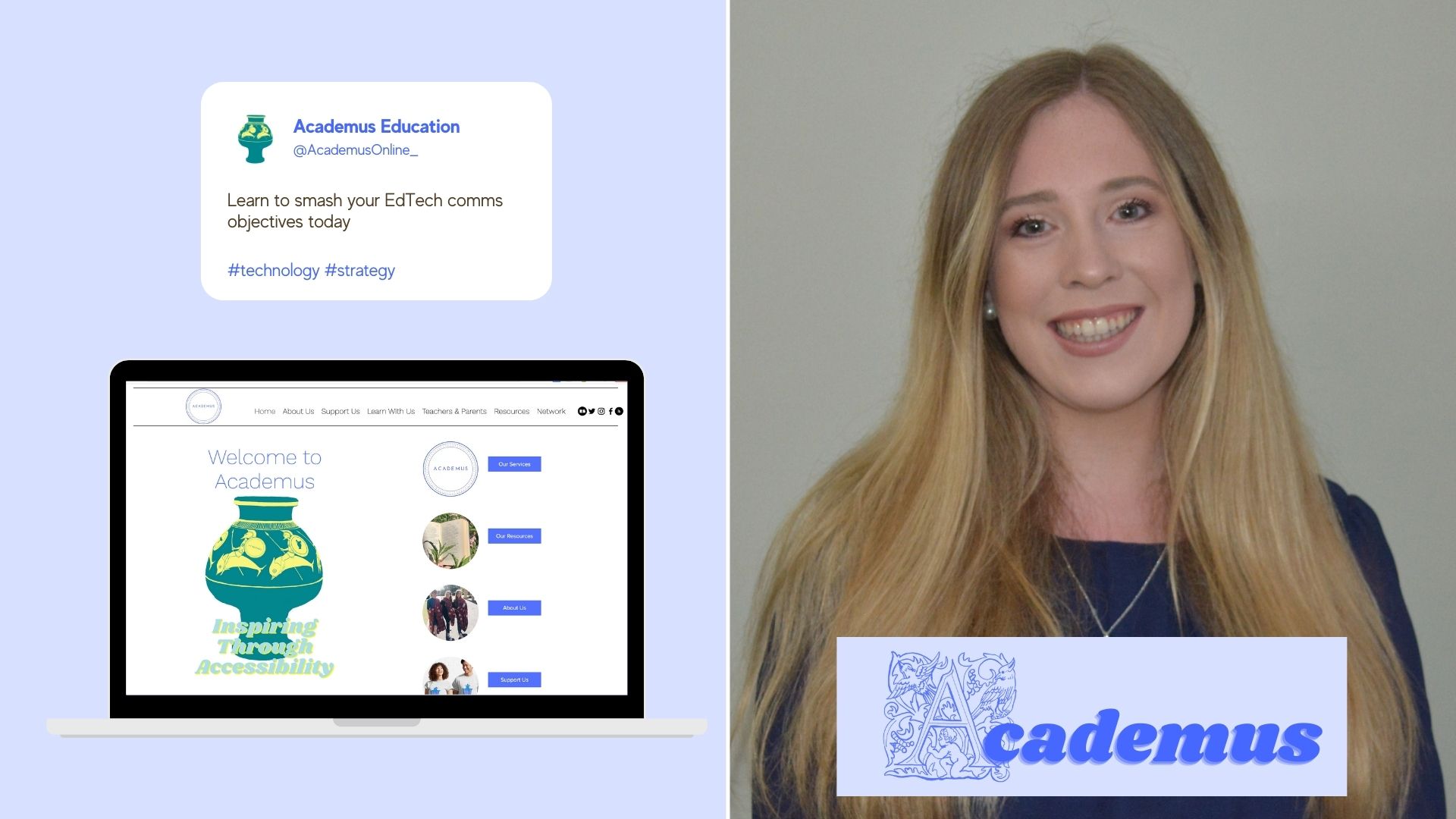Getting off the ground: the initial hurdles as an EdTech startup and how to overcome them

As the founder of a non-profit EdTech startup, Academus, I know just how hard it can be to overcome the initial challenges of entering the market. EdTech is such an exciting space with information, data and knowledge all at our fingertips, but communicating this and standing out can be tough. I’ve learnt that trust, brand identity and public awareness are all crucial to success. In this article, I’ll give an honest overview of what these challenges can look like and how you can successfully overcome them to lead your company towards achieving its goals.
It all starts with the brand
The EdTech sector is primarily split into three major strands:
- Synchronous/Asynchronous virtual learning: environments that involve a person teaching either in real-time or they are recorded.
- Linear computer-based training (CBT): online courses/games that assess progress by computer run tests and assessments.
- Computer supported collaborative learning (CSCL): a hybrid of the two – some reliance on computer teaching and other elements that rely on human assistance.
When creating a brand, it is important to understand which category your company falls into. My startup, for example, is a mix between synchronous and asynchronous virtual learning. Once you have an understanding of who you are and how you provide education, you can begin to understand your place in the market. Is there a need for your product? Who is your audience? Who are your competitors? What is your unique selling point? Answering these questions will help define a strong brand.
As a startup it’s natural to be driven, but you have to be realistic. Developing a brand strategy will help ground you. As a first port of call, establish your key messages and what you stand for. From then, you can understand the core values of your business, where you need to invest time, money and in people.
There are a number of things to consider when creating a brand such as logos, a name, your visual identity and tone of voice. My advice is to take it step by step. I can assure you, starting with what you want the world to see will enable you to keep the cogs ticking over.
Building trust
Once you have established what you want your brand to be, you have to get people to believe in it. Trust is the most valuable asset to build for your EdTech in the early stages. The science to this being: with trust comes investment, engagement and faith. When you begin an EdTech, there is a period where you need people to trust your offering, even if it does not yet exist in its full form. When I launched Academus we had three staff, a big idea and a strategy for a BETA launch, since we have worked with over 1000 students across the UK and have run over 10 different programmes, all stemming from building trust with the public.
In EdTech, trust is an even greater requirement than elsewhere. Why? Because with any education product, you are providing knowledge and, ultimately, the truth. The key, therefore, is transparency. Having a brand and key messages to ground you is the first step, then you have to communicate this. On a practical level, creating a cohesive and dedicated web space with founding principles and clearly outlined policies is so important. This page will become a congregational area for people to understand they are engaging with something safe and trustworthy.
Standing out from the crowd
There’s an assumption amongst many tech founders (including EdTech) that the product will carry itself. However, it doesn’t matter whether you have developed the best technology in the world, it is nothing if people aren’t using it. Putting your brand out there and demonstrating that you have built trust amongst your audience can generate hype. You need to consistently channel your efforts into brand awareness through PR and marketing.
There are a range of brand awareness tactics to try, and it varies depending on the EdTech, however, something I found fundamental to Academus’ growth was using social media. We don’t have the biggest following, but we have a loyal audience, and it’s exactly what our prospects need to see.
Having a social media strategy means you can directly engage with your audience on a personal level, get involved in important industry conversations and control the narrative you want to share about your company with the public. For example, at Academus we specifically develop Twitter and Instagram campaigns tied to current affairs, for example, during Pride Month, we promoted our series of LGBT+ articles to get our audience engaged in our services.
Ultimately, the EdTech space is exciting, everchanging and such a positive environment to be in. Whilst getting off the ground takes grit and perseverance, establishing your brand, building trust and using PR and marketing to raise awareness of your product should make those mountains easier to climb and get your EdTech where it wants to go.
Emily Shead is an Account Executive on the tech team at Aspectus and founder of Academus. If you’d like to get in touch with your questions about EdTech PR and marketing, feel free to email emily.shead@aspectusgroup.com.

